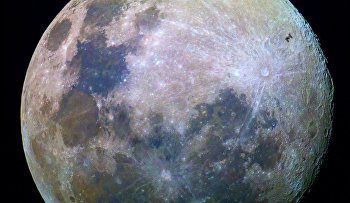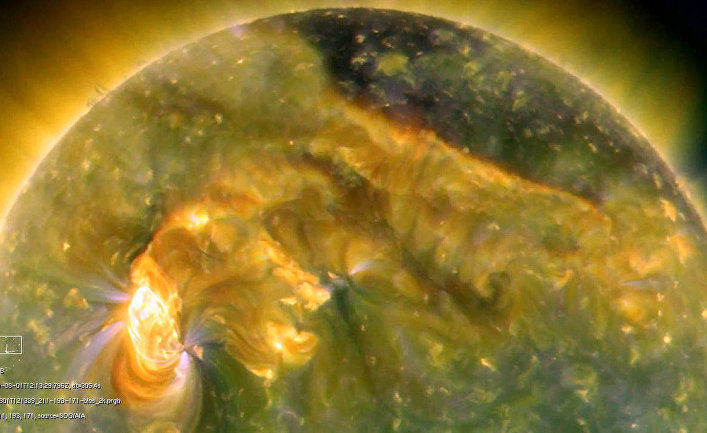Sciences love any kind of riddle. Astronomers love looking for them. And journalists love it, when astronomers can't explain any kind of phenomenon – even though the objects of research are distant planets, stars, and in other galaxies, with the great temptation to explain such rogue phenomena as being caused by alien life forms. This all makes it even more interesting that scientists have been bound up for the past eight years with FRBs – Fast Radio Bursts – and that the journal Nature has devoted an article to them in the latest issue.
Despite the fact that astronomers have been on radio look-out since the mid-twentieth century, the first actual signals of this kind were only picked-up in 2007. It became possible because astronomers had learned to identify short bursts of signal, no more than a millisecond long – although that was by no means easy, because there's always some kind of background noise on the radio-waves going on in space.
The first radio burst to be identified in 2007 didn't resemble any previous signals, and didn't originate anywhere in the galaxy, but emanated from the direction of the Magellan Cloud. The same year, two staff at the State Sternberg Astronomical Institute of Moscow State University, Sergey Popov and Konstantin Postnov published an article in which they explained their theories for the origins of these bursts. They suggested a mechanism, which shows how these bursts can originate on magnetars – magnetized neutron stars, of which the first to be discovered was written up by Soviet astrophysicist Evgeny Mazets, with his co-authors.
Magnetic interstellar plasma helps pinpoint source of mysterious radio bursts from space: https://t.co/37G24RyJvr pic.twitter.com/AbaFLgChUo
— Science News (@ScienceNews) December 6, 2015
Sergey Popov, Doctor of Physical & Mathematical Science, gave Gazeta.Ru his take on the matter. “The situation was just like the gamma-ray bursts which were detected in the 1960s. There's something up there in the cosmos beeping – but we don't know where it's coming from.” After the first burst was detected, the source went silent. The next burst was not detected until 2012 within the galactic plane – and then in 2013 four further bursts were recorded.
Over these years astronomers began to notice unusual 'peritonite' bursts, which suggested an earthly origin – but it was only in 2015 that this was proved. In fact the source of these unusual bursts was a microwave oven, which someone had sited next to the Parks telescope in Australia. That was when it became clear that the authentic FRBs are coming from outer space. Two Australian researchers, who unscrambled the 'peritonite' mystery in 2014, were then able to capture the authentic FRBs during the moment of their emission. Previously such FRBs had only been identified by trawling through archive data for them.
This was the first it had been possible to bring differing kinds of telescopes – optical, and x-ray – to bear on the part of the sky in question… yet astronomers found nothing.
“I clearly remember all the jokes about gamma-ray bursts – people were joking that the number of theories about them actually outnumbered the number of gamma-rays. The situation with radio bursts today is exactly the same”, Popov recalls – when adding up over 20 different models which would explain the origin of the bursts. Among these models are listed cosmic streams, merging neutron stars, white dwarf stars, neutron stars which are collapsing into black holes, asteroids falling on neutron stars, and other explanations.
"Fast radio burst" sheds new light on origin of these extreme events https://t.co/uoVK7Rajti pic.twitter.com/nX5G8RJTGf
— Astronomy Magazine (@AstronomyMag) December 2, 2015
Interest in FRBs is high, and not a week goes by without 1-2 articles published in scientific journals on the topic. At the close of November 2015 a group of Australian scientists produced an article about new bursts identified in archives, which include the first known example of a double FRB.
“This idea of a double burst clearly disproves some of the explanation models which have been advanced for single bursts, but can't credibly explain a double burst,” scientists say. The absence of radio bursts occurring at other wavelengths is consistent with the model advanced by Russian scientists in 2007. “This is exactly what we predicted – not all explanation models predict that other wavelengths will be empty” explains Popov – a regular contributor to Gazeta.Ru, who plans to go into more detail about FRBs in his public lecture on the topic on 6th December.
In an article in the current issue of Nature, scientists led by Kiyoshi Masui of the University of British Columbia (Canada) reach the conclusion that whatever the source of these puzzling emissions might be, there would have be a significant amount of matter through which the signals emerge. This would be indicated by the so-called Faraday Rotation of the signal received from the source transmitting FRB 110523 – an effect long familiar to physicists which shows that the waves which have been emitted have passed through some magnetized medium.
Could fast radio burst from pulsars be a window into new physics? http://t.co/2GLpnWMCg8
— Jennifer Ouellette (@JenLucPiquant) June 10, 2015
“This significantly reduces the limits on the conditions around the emission source, and the kind of event which is producing the bursts – which means that the impulse source, as far as we can imagine, is located within an area of star formation, or perhaps the remains of a supernova,” Masui says. He believes that the magnetar hypothesis – first put forward by the Russian scientists (even though it is not actually cited) is preferable to other explanations about the merging of neutron stars and so on. This is because such merging takes place in regions with lower matter density in galaxies.
The source is located somewhere among the remnants of a supernova – or in a star-forming region where a lot of gas is present. Either of these locations would ideally correlate with the magnetar theory. That's because the usual age of magnetars is just a few tens of thousands of years, and we find them in areas where star creation is going on actively,” Popov agrees. The detailed mechanism of how the magnetar flare was devised by an Israeli colleague of the Russian scientists, Dr Yuri Lubarsky. Dr Lubarsky suggests that this kind of magnetar is probably surrounded by a nebula. When the magnetic impulse of the emission from the magnetar hits the nebula, a laser mechanism produces the radio emission.

Estimates show that such emissions from magnetars might occur once in several hundred years – which chimes very well with the statistics which have been observed. “Stats on the numbers of such emissions in the heavens which have been collected by observers concur with the figures we expect from predictions. And even if the emission rate is just once in a lifetime, it still conforms to the statistics. What we can see in actuality is a synchronized maser – which is a completely unique event, that cannot be created in a vacuum, and can only happen in plasma”, explains Dr Konstantin Postnov, Professor of the Physics faculty of Moscow State University.






